新编商务英语综合教程第二版Unit 1
- 格式:ppt
- 大小:5.16 MB
- 文档页数:259
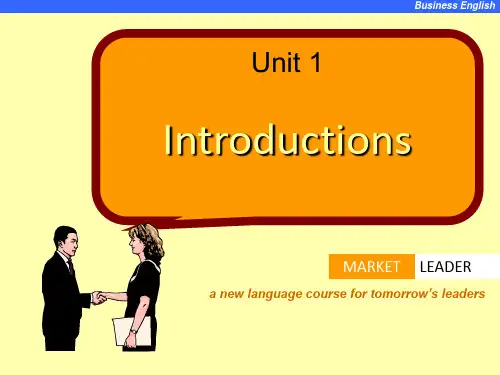
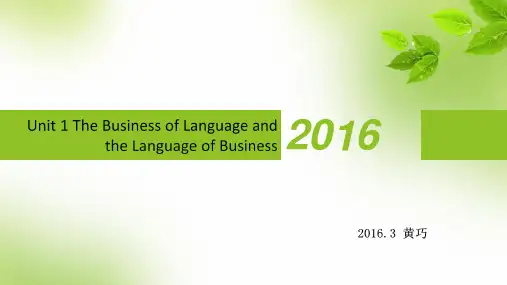

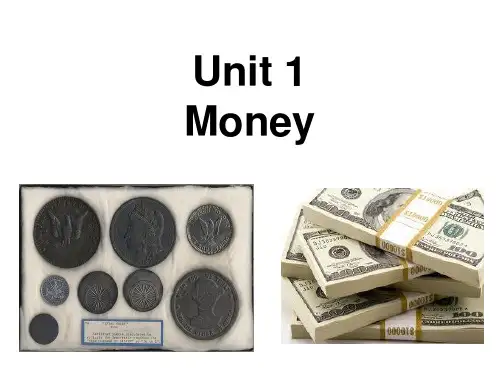
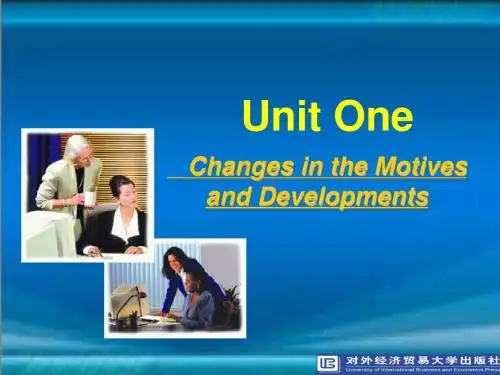


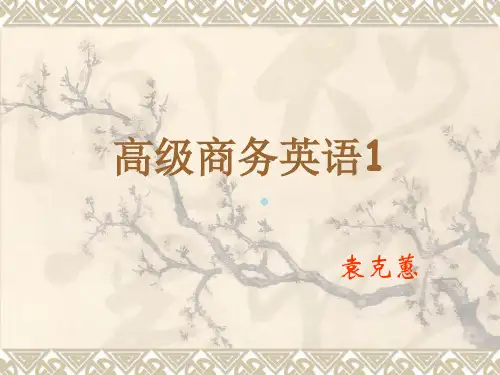


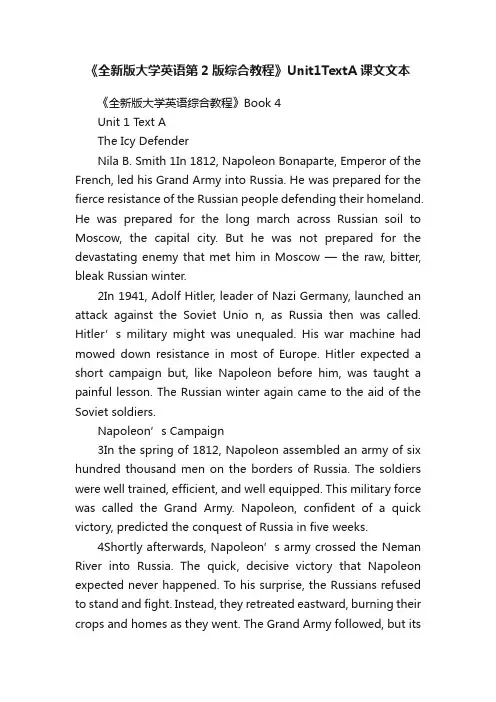
《全新版大学英语第2版综合教程》Unit1TextA课文文本《全新版大学英语综合教程》Book 4Unit 1 Text AThe Icy DefenderNila B. Smith 1In 1812, Napoleon Bonaparte, Emperor of the French, led his Grand Army into Russia. He was prepared for the fierce resistance of the Russian people defending their homeland. He was prepared for the long march across Russian soil to Moscow, the capital city. But he was not prepared for the devastating enemy that met him in Moscow — the raw, bitter, bleak Russian winter.2In 1941, Adolf Hitler, leader of Nazi Germany, launched an attack against the Soviet Unio n, as Russia then was called. Hitler’s military might was unequaled. His war machine had mowed down resistance in most of Europe. Hitler expected a short campaign but, like Napoleon before him, was taught a painful lesson. The Russian winter again came to the aid of the Soviet soldiers.Napoleon’s Campaign3In the spring of 1812, Napoleon assembled an army of six hundred thousand men on the borders of Russia. The soldiers were well trained, efficient, and well equipped. This military force was called the Grand Army. Napoleon, confident of a quick victory, predicted the conquest of Russia in five weeks.4Shortly afterwards, Napoleon’s army c rossed the Neman River into Russia. The quick, decisive victory that Napoleon expected never happened. To his surprise, the Russians refused to stand and fight. Instead, they retreated eastward, burning their crops and homes as they went. The Grand Army followed, but itsadvance march soon became bogged down by slow-moving supply lines.5In August, the French and Russian armies engaged at Smolensk, in a battle that left over ten thousand dead on each side. Yet, the Russians were again able to retreat farther into Russian territory. Napoleon had won no decisive victory. He was now faced with a crucial decision. Should he continue to pursue the Russian army? Or should he keep his army in Smolensk for the approaching winter?6Napoleon took the gamble of pressing on to Moscow, 448 kilometers away. On September 7, 1812, the French and Russian armies met in a fierce battle at Borodino, 112 kilometers west of Moscow. By nightfall, thirty thousand French and forty-four thousand Russians lay dead or wounded on the battlefield.7Again, the Russian army retreated to safety. Napoleon had a clear path to Moscow, but the occupation of the city became an empty victory. The Russians fled their capital. Soon after the French arrived, a raging fire destroyed two-thirds of the city. Napoleon offered a truce to Alexander I, but the Russian czar knew he could bide his time: “We shall let the Russian winter fight the war for us.”8Napoleon soon realized he could not feed, clothe, and quarter his army in Moscow during the winter. In October 1812, he ordered his Grand Army to retreatfrom Moscow.9The French retreat turned into a nightmare. From fields and forests, the Russians launched hit-and-run attacks on the French.A short distance from Moscow, the temperature had already dropped to minus 4 degrees Celsius. On November 3, the winter’s first snow came. Exhaus ted horses fell dead in theirtracks. Cannon became stuck in the snow. Equipment had to be burned for fuel. Soldiers took ill and froze to death. The French soldiers dragged on, leaving the dead along every mile.10As the Russian army was gathering its strength, the French had to flee Russia to avoid certain defeat. At the Berezina River, the Russians nearly trapped the retreating French by burning the bridges over the swollen river. But Napoleon, by a stroke of luck, was able to build two new bridges. Thousands of French soldiers escaped, but at the cost of fifty thousand dead. Once across the Berezina, the tattered survivors limped toward Vilna.11Of the six hundred thousand soldiers Napoleon had led into Russia, less than one hundred thousand came back. The weakened French army continued its retreat westward across Europe. Soon, Britain, Austria, Russia, and Prussia formed a powerful alliance and attacked these stragglers. In March 1814, Paris was captured. Napoleon abdicated and went into exile, his empire at an end.Hitler’s Invasion12By early 1941, Adolf Hitler, leader of Nazi Germany, had seized control of most of Europe. T o the east of Hitler’s German empire was the Soviet Union. On June 22, 1941, without a declaration of war, Hitler began an invasion of the Soviet Union that was the largest military land campaign in history. Confident of a quick victory, Hitler expected the campaign to last no longer than three months.He planned to use the blitzkrieg , or “lightning war,” tactics that had def eated the rest of Europe. The invasion had three broad thrusts: against Leningrad and Moscow and through the Ukraine.13Caught off guard by the invasion, Soviet leader Joseph Sta lin instructed the Russian people to “scorch the earth” infront of the Germ an invaders. Farms and factories were burned, destroyed, or rendered useless. During the first ten weeks of the invasion, the Germans pushed the front eastward, and the Russians suffered more than a million casualties.14In the north, the Germans closed in on Leningrad. Despite great suffering, however, the people of Leningrad refused to surrender. As the battle of Leningrad dragged on into winter, the city’s situation became despe rate. As food ran out, people died from hunger and disease. By the middle of the winter of 1941—1942, nearly four thousand people starved to death every day. Close to one million people died as a result of the siege.15In the center of Russia, Hitler’s goa l was the capture of Moscow. Because the Germans had anticipated a quick victory, they had made no plans for winter supplies. October arrived with heavy rains. “General Mud” slowed down the movement of the Germans’ lightning attack.16As Hitler’s armies dr ew closer and closer to Moscow, an early, severe wintersettled over the Soviet Union, the harshest in years. Temperatures dropped to minus 48 degrees Celsius. Heavy snows fell. The German soldiers, completely unprepared for the Russian winter, froze in their light summer uniforms. The German tanks lay buried in the heavy snowbanks. The Russian winter brought the German offensive to a halt.17By the summer of 1942, Hitler had launched two new offensives. In the south, the Germans captured Sevastopol. Hitler then pushed east to Stalingrad, a great industrial city that stretched for 48 kilometers along the V olga River. Despite great suffering, Soviet defenders refused to give up Stalingrad.18In November 1942, the Russians launched a counterattack.With little or no shelter from the winter cold in and around Stalingrad, German troops were further weakened by a lack of food and supplies. Not until January 1943 did the Germans give up their siege. Of the three hundred thousand Germans attacking Stalingrad, only ninety thousand starving soldiers were left. The loss of the battle for Stalingrad finally turned the tide against Hitler. The German victories were over, thanks in part to the Russian winter.19During 1943 and 1944, the Soviet armies pushed the German front back toward the west. In the north, the Red Army broke the three-year siege of Leningrad with a surprise attack on January 15, 1944. Within two weeks, the heroic survivors of Leningrad saw their invaders depart. By March 1944, the Ukraine farming region was again in Soviet hands. On May 9, 1944, Sevastopol was liberated from the Germans. The Russians were now heading for Berlin.20For Hitler, the invasion of the Soviet Union had turned into a military disaster. For the Russian people, it brought unspeakable suffering. The total Soviet dead in World War II reached almost 23 million.Russia’s Icy Defender21The elements of nature must be reckoned with in any military campaign. Napoleon and Hitler both underestimated the severity of the Russian winter. Snow, ice, and freezing temperatures took their toll on both invading armies. For the Russian people, the winter was an icy defender.。
商务英语综合教程U1-U7课后答案Unit 1 Company Profile1.Translate the following Chinese terms into English.candidate patentindustry personnel registered trademarkcore competency domain nameintended market emerging marketheadquarter multinational corporation Chief Executive Officer stakeholder2.Translate the following English terms into Chinese.股本,股⾦总额以⼈为本的解决⽅案精于⼼简于形对客户的深⼊了解⼯业⾰命回收利⽤3.Translation:宝洁公司始创于1837年,是世界上最⼤的⽇⽤消费品公司之⼀。
2007财政年度,公司全年销售额达682亿美元。
在《财富》杂志评选出的全球500家最⼤企业中,排名第74位。
宝洁公司在全球80多个国家设有⼯⼚或分公司,所经营的300多个品牌的产品畅销160多个国家和地区,其中包括美容护理、居家护理、吉列产品等。
每天,在世界各地,宝洁公司的产品与全球消费者发⽣着三⼗亿次亲密接触。
宝洁⼤中华业务区包括1988年成⽴的中国⼤陆分公司、1987成⽴的⾹港分公司和1985年成⽴的台湾分公司。
⼀九⼋⼋年,宝洁公司在⼴州成⽴了在中国的第⼀家合资企业-⼴州宝洁有限公司,从此开始了其中国业务发展的历程。
宝洁总部位于⼴州,⽬前在⼴州、北京、上海、成都、天津、东莞及南平等地设有多家分公司及⼯⼚,并在北京设⽴技术中⼼。
⼆⼗年来,宝洁取得了飞速的发展,主要表现在:建⽴了领先的⼤品牌宝洁公司是中国最⼤的⽇⽤消费品公司,年销售额超过⼆⼗亿美元。
我们在参与竞争的领域内占据了最⼤的市场份额。
《综合商务英语Ⅰ》课程教学大纲Course syllabus of Business English: An IntegratedCourse Ⅰ一、课程基本信息Course Information课程代码: 16068004Course Code: 16068004课程名称:综合商务英语ⅠCourse Name: Business English: An Integrated Course Ⅰ课程类别:专业必修课Course Type: Compulsory学时:60学时Course Period: 60 hours学分:4学分Course Credit: 4适用对象: 商务英语专业1年级学生Students: First year undergraduate考核方式:考试Assessment: Examination先修课程:无Preparatory Course: None2、课程简介Course Introduction综合商务英语Ⅰ是为商务英语专业学生开设的1门专业技能必修课。
课程所选教材《商务英语综合教程》(第二版)是我国商务英语专业第1套按商务英语专业教学要求编写的教材,由对外经济贸易大学和上海外语教育出版社共同编写。
商务英语综合教程强调语言、文化与商务3者的有机结合,整套教材分为4册,1-4册中的语言技能、商务知识、文化知识按比例合理分配,第1册中的分配比例为,语言70%,商务与文化30%。
《商务英语综合教程Ⅰ》共有8个单元,其中每个单元包括围绕1个话题的3篇课文和配套视频资料。
每个单元的大体结构如下:第1部分:准备(词汇、内容、知识),第2部分:课文Ⅰ(课文理解检查),第3部分:课文II(阅读理解练习、视听练习等),第4部分:课文III:(语言练习与小组作业),第5部分:语言训练(语言点、理解练习、学习技能、写作技能)。
The undergraduate course Integrated Business English prepares students to play an active and creative role in today’s globalized world by exploring English languageand Business across cultures. The course bookBusiness English: An Integrated Course Book 1 constructs 8 topics for the whole semester, each containing 3 articles with language skill practices and in class discussions.3、课程性质与教学目的综合商务英语是1门专业技能必修课,是为商务英语专业开设的1门基础阶段主干课程。